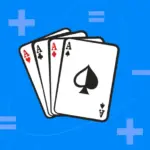Spin Break Roulette Battle IPA is a competitive twist on classic roulette, where players step into a time-boxed arena and aim to outscore opponents rather than merely out-win the wheel. It blends the luck of the spin with the pacing of rounds, the structure of points, and the drama of head-to-head strategy. The result is a spectacle where probability, psychology, and smart pacing all matter.
In this format, players commit to decisions during quick “spin breaks,” short windows before each spin where bets lock, special modifiers activate, and mind games unfold. It’s not just about selecting numbers; it’s about reading momentum, preserving composure, and navigating the scoring landscape. The wheel remains impartial, but the match is unmistakably competitive.
Whether viewed as a sportified casino overlay or a new genre of odds-based e-sport, Spin Break Roulette Battle rewards clarity under pressure. It’s simple to watch, surprisingly deep to master, and designed to showcase different styles-calculators, instinct players, momentum riders-on a level playing field.

Spin Break Roulette Battle: Defining the Arena
The core identity of the “arena” format
At its heart, the arena is a structured sequence of spins divided into heats and rounds. Each round features a short decision window-the titular spin break-where players lock in positions and optional match modifiers. The match scoreboard tracks not just win/loss on chips, but comparative performance: consistency, streak discipline, and successful reads on volatility all influence points.
Two things define the battlefield: visibility and tempo. Visibility means you see your rivals’ public metrics-banked points, streak flags, timeouts used-but not their exact wagers, preserving suspense. Tempo means no waiting for long sessions; a match moves briskly, with quick locks, decisive resolves, and limited time for reflection, which stresses composure as much as calculation.
Formats vary, but the arena’s spirit stays the same: an even start, a fair wheel, transparent scoring, and finite rounds. That structure turns roulette’s rhythm into a competitive arc with early scouting, mid-match adaptation, and a closing sprint when every decision can flip a leaderboard.
- Solo Queue: Everyone-for-themselves leaderboard.
- Duo Relay: Partners alternate spin breaks.
- Squad Gauntlet: Team total versus team total.
Under the Hood: How Matches Flow and How Points Are Made
Cadence, phases, and scoring logic
A match typically opens with a brief calibration phase-players join the lobby, verify safeguards, and receive the match card (round count, variant, timeouts, and caps). Then the engine cycles: spin break (decision), lock (no more changes), resolve (outcome + scoring), and update (leaderboard refresh). This loop repeats across defined rounds, with short intermissions to prevent fatigue.
Points are awarded on a matrix that balances fairness and drama. Raw chip outcomes inform a “performance index,” normalized against the risk taken (for example, wider coverage yields steadier but modest index returns; narrow coverage can spike results but carries penalty factors for whiffs). Streaks, precision hits, and efficient timeout usage can confer small, capped bonuses-never enough to overshadow core performance, but enough to reward discipline.
Transparency is critical. The platform discloses how each point was computed, with a per-round breakdown that can be audited. Players can see where they earned, where they leaked, and how variance interacted with their choices. This keeps the focus on matchcraft rather than mystery math.
| Event | Point Cue | Note |
|---|---|---|
| Hit on narrow coverage | High index gain | Scaled by risk and cap |
| Near-miss sequence | Variance buffer | Minor cushion, round-limited |
| Three steady rounds | Consistency bonus | Small, non-stacking |
| Timeout used well | Efficiency tick | Once per heat |
| Overexposure flag | Soft penalty | Discourages extreme spikes |
Edges and Gambits: Managing Risk in Real Time
Balancing exposure with match context
Live risk in Spin Break Roulette Battle is about trajectory, not just survival. Because points reward consistency as well as precision, players often weigh whether to stabilize (protect a lead) or press (chase a gap) in the final rounds. The system includes soft caps and variance buffers to prevent runaway snowballs, but reckless pivots can still sink a match.
Practical levers include tightening or widening coverage, toggling optional modifiers (if the variant permits), and using timeouts to regain clarity. These choices change the volatility profile of the next few rounds, and the scoring model interprets them alongside outcomes-neither punishing reasonable ambition nor over-rewarding coin-flip heroics.
Because the wheel’s base odds don’t change, the authentic “edge” lies in pacing, risk calibration, and mental steadiness. Gambits work when they fit a coherent arc-early scouting, mid-match posture, endgame clarity-and when they respect the arena’s caps and etiquette.
- Tighten: Lower variance, protect index gains.
- Press: Higher variance, structured catch-up.
- Pause: Timeout to reset, avoid tilt moves.
| Risk Lever | Immediate Impact | Common Use |
|---|---|---|
| Widen coverage | Smoother results | Holding a lead |
| Narrow coverage | Spikier results | Closing a gap |
| Timeout | Decision quality boost | Breaking cold streak |
The Wheel and the Mind: Probability Meets Psychology
Thinking clearly under pressure
Spin Break Roulette Battle pairs known odds with human tendencies. While every spin is statistically independent, players often feel patterns pressing on them-streaks, “due” numbers, the rush of a clutch hit. The format’s time pressure can amplify these effects, so the most dependable advantage is composure.
Probability literacy helps: understanding coverage, payout structures, and how small changes alter variance can keep decisions grounded. Meanwhile, the scoreboard can tempt reactive shifts; strong players ask whether a change fits probability or just emotion. Arena tools-timeout, soft caps, clear logs-exist to nudge decisions back toward reason.
Psychology isn’t the enemy; it’s a factor to be managed. Rituals that stabilize focus, brief post-round reflections, and respecting cooldowns help keep the match inside skillful boundaries, where judgment-not impulse-guides the final rounds.
| Cognitive Bias | Typical Trap | Grounding Habit |
|---|---|---|
| Gambler’s fallacy | “Red is due” | Treat spins as independent |
| Hot-hand belief | Over-pressing after hits | Pre-set press rules |
| Loss aversion | Chasing quickly | Use timeout before pivot |
| Confirmation bias | Cherry-picking patterns | Check round logs |
Gears of the Arena: Platforms, Safeguards, and Format Variants
Infrastructure for fairness and clarity
Reliable arenas run on transparent platforms: certified RNG wheels, immutable round logs, and visible scoring formulas. A clean interface highlights the spin break timer, current heat, active modifiers, and a concise, auditable leaderboard. Spectator views and replay exports help the community learn and the format grow.
Safeguards are non-negotiable. Mandatory session limits, cool-downs, and timeouts exist to support measured play. Identity checks, regional compliance, and anti-collusion analytics protect integrity. Clear, accessible records let players audit outcomes without guesswork.
Variants keep the scene fresh without distorting fairness. Some tweak round length, others alter bonus triggers or add cooperative relays. The best variants change texture-not odds-so players can bring style without needing a new rulebook each week.
| Platform Feature | Safeguard | Benefit |
|---|---|---|
| Certified wheel RNG | Third-party audits | Trust in outcomes |
| Match logs | Immutable records | Easy reviews |
| Timeout controls | Rate limits | Reduce tilt |
| Spectator mode | Data masking | Fair viewing |
- Rapid Rounds: Shorter breaks, tighter decisions.
- Relay Teams: Alternating captains per spin.
- Endgame Surge: Final-round bonus caps with strict limits.
After the Last Spin: Outcomes, Etiquette, and What Comes Next
Closing the loop with clarity and respect
When the final resolve settles, the platform tallies points, applies caps, and posts the final board with a per-round breakdown. If tiebreakers are needed, they’re applied in a published order-usually consistency, then precision, then earliest lead held. Players can export summaries for personal review or squad coaching.
Etiquette matters because the arena is shared. Celebrate wins without gloating, analyze losses without blaming the wheel, and respect timeouts and pauses. The community thrives when players model poise, honor platform rules, and welcome newcomers with explanations rather than mystique.
Next steps are simple: cool down, review a few key rounds, and decide-practice room, scrim, or another queue later. The healthiest habit is pacing participation and embracing the match as a test of judgment, not a chase. The wheel will still be there tomorrow.
| Situation | Protocol | Outcome |
|---|---|---|
| Exact tie | Tiebreaker order | Winner assigned |
| Dispute | Audit log review | Ruling in minutes |
| Timeout abuse | Rate cap + warning | Fair pacing restored |
- Do: Share insights, keep it sportsmanlike.
- Don’t: Reveal others’ private data or pressure rematches.
- Always: Observe local laws and platform limits.
Conclusion:
Download Spin Break Roulette Battle IPA For iOS reframes roulette as a measured contest of rhythm, reason, and resolve. The wheel stays impartial; the arena adds structure, transparency, and a competitive arc that rewards clear thinking under pressure. With fair platforms, firm safeguards, and a culture of respect, it becomes less about chasing fortune-and more about meeting the moment.







Leave a Comment